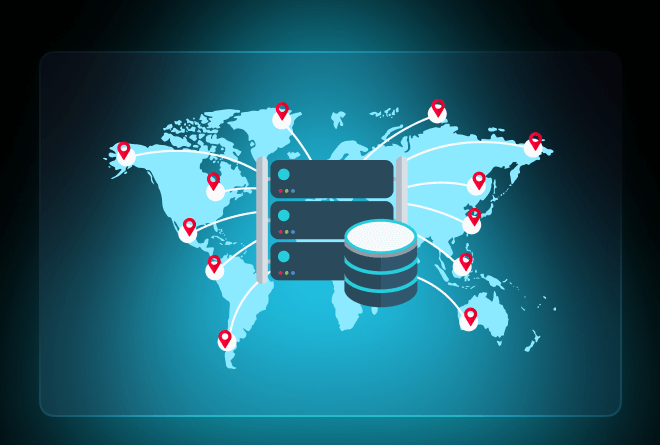Scaling Your Hosting Plan as Your Website Grows

Launching a website is just the beginning. As your audience expands, your content multiplies, and your business or blog gains traction, the infrastructure behind your website must evolve too. What worked perfectly when your traffic was in the hundreds per month may struggle to keep up when you hit tens or hundreds of thousands. This is where scaling your hosting plan becomes essential—not just for performance, but also for maintaining user trust, search engine rankings, and overall reliability.
Whether you’re running a personal blog, an e-commerce store, a SaaS platform, or a media-heavy portfolio, understanding how to scale your hosting environment effectively can make or break your growth strategy. In this article, we’ll walk you through the when, why, and how of scaling your hosting plan, demystifying technical jargon and offering clear, actionable guidance.
Why Scaling Matters
Before diving into the how, it’s important to understand why scaling is crucial.
Performance Under Pressure
One of the clearest signs that your website is outgrowing its current hosting environment is a noticeable drop in performance. Pages take longer to load, transactions fail to process smoothly, or worse—your site crashes under heavy traffic.
Google’s Core Web Vitals are increasingly performance-driven, meaning that a sluggish site can hurt your search engine rankings. In the age of short attention spans, a few extra seconds of load time can mean lost conversions, abandoned carts, or readers bouncing to a competitor’s site.
Resource Bottlenecks
Most entry-level hosting plans—especially shared hosting—come with hard resource limits: CPU time, memory allocation, and bandwidth ceilings. As you publish more content, add plugins or apps, and attract more visitors, you start to stretch these limits. Suddenly, your host may throttle your account or send you a warning email. Ignoring these signs can lead to downtime or even account suspension.
Security and Stability
With growth comes complexity. More plugins, more users, more integrations—all of which increase the risk of vulnerabilities. Some entry-level hosting environments lack advanced security features, or worse, expose you to risks from neighboring sites on the same shared server.
Scaling to a more isolated and resource-rich environment gives you tighter control over security configurations, better firewall management, and more robust backup strategies.
Signs You Need to Scale
You don’t need to be a sysadmin to recognize when it’s time to upgrade. Here are some common red flags:
- Frequent Downtime: Your site is becoming inaccessible too often, especially during peak hours or marketing campaigns.
- Slow Page Loads: You’ve optimized your images and code, but your site is still sluggish.
- Resource Limit Warnings: Your host is sending alerts about CPU, RAM, or bandwidth usage.
- E-commerce Struggles: Checkouts fail during high-traffic events like Black Friday or product launches.
- Plugin Conflicts: Heavy plugins that worked fine initially now cause crashes or timeout errors.
- Growth Projections: You’re planning a content blitz, ad campaign, or product launch expected to significantly increase traffic.
If any of these scenarios sound familiar, you’re not alone—and you’re not stuck. Scaling up is not only possible; it’s often easier than you think.
Understanding the Types of Hosting Options
To scale smartly, you need to understand the hosting spectrum. Each tier brings different levels of power, flexibility, and responsibility.
Shared Hosting
Best for: New websites, small blogs, low traffic
Pros: Cheap, easy to use, low maintenance
Cons: Limited resources, security risks, less control
Shared hosting means you’re on a server with many other users. It’s like renting a room in a crowded house. If one site hogs the bandwidth or gets hacked, you might suffer too.
Scaling out of shared hosting is often your first major upgrade as your site gains momentum.
Virtual Private Server (VPS)
Best for: Medium-sized websites, growing businesses, moderate traffic
Pros: Dedicated resources, customizable, better performance
Cons: Slightly more technical, can be pricier
VPS hosting slices a physical server into virtual segments. It gives you more control without the full complexity of managing a dedicated server. Most reputable hosts offer managed VPS options, where they handle technical upkeep for you.
This is a strong middle ground for sites that have outgrown shared hosting but aren’t ready for enterprise-level solutions.
Cloud Hosting
Best for: Rapidly scaling websites, SaaS platforms, e-commerce
Pros: Scalable on demand, high uptime, pay-as-you-go pricing
Cons: Pricing can fluctuate, more complex to configure
Cloud hosting platforms like AWS, Google Cloud, and DigitalOcean provide infrastructure that can scale dynamically with traffic. If you’re expecting variable traffic spikes or want auto-scaling capabilities, cloud hosting is a powerful solution.
Dedicated Server
Best for: High-traffic websites, mission-critical applications
Pros: Full control, top-tier performance, high security
Cons: Expensive, requires technical expertise
With a dedicated server, you’re renting an entire machine. This option is ideal for enterprise businesses or websites with millions of monthly visitors, custom server needs, or advanced compliance requirements.
Planning Your Scale-Up Strategy
Now that you know the lay of the land, let’s talk strategy. Scaling isn’t just about switching plans—it’s about thinking ahead, optimizing what you have, and preparing for growth before it overwhelms you.
1. Conduct a Performance Audit
Use tools like:
- Google PageSpeed Insights – for frontend performance
- GTmetrix – for load time and waterfall analysis
- New Relic or Datadog – for backend resource monitoring
Identify your current bottlenecks. Is your CPU maxing out? Is memory consistently strained? Are database queries slowing down response times?
These insights help determine whether optimization alone is enough or if a move to a higher-tier plan is necessary.
2. Optimize Before You Upgrade
Sometimes, a poorly optimized site can look like it needs more power—when it really just needs a tune-up.
- Compress images and serve them in modern formats like WebP
- Use a caching plugin (e.g., WP Rocket, W3 Total Cache)
- Minify CSS, JS, and HTML
- Remove unused plugins and themes
- Enable a content delivery network (CDN) like Cloudflare
These steps reduce server load and make the most of your current hosting plan, potentially postponing the need to upgrade.
3. Evaluate Hosting Providers
Not all hosts are created equal. Some “VPS” plans barely outperform shared hosting. Others include robust features like:
- Free SSL and backups
- Built-in CDN support
- Advanced firewall and malware scanning
- One-click staging environments
Research your options. Check reviews, compare benchmarks, and ensure your next host offers room to grow beyond your immediate needs.
4. Migrate With a Plan
When you’re ready to switch plans or providers, plan your migration to avoid downtime or data loss.
- Backup everything: database, files, emails
- Notify users in advance if you expect brief maintenance
- Use a plugin or service for migration (e.g., Duplicator, BlogVault, or your host’s free migration tool)
- Test your site in a staging environment before going live
If you’re moving to cloud or VPS hosting, ask your new provider if they offer managed migration—it’s often included for free.
5. Monitor After Scaling
Scaling is not a one-time task. As your site continues to grow, so do your infrastructure needs.
- Set up uptime monitors (e.g., UptimeRobot)
- Use Google Analytics or GA4 to watch traffic spikes
- Regularly audit performance and security
- Review billing and resource usage monthly
Scaling is an iterative process. Don’t wait until the next crisis—be proactive.
When to Consider Horizontal Scaling
Most traditional hosting plans scale vertically: you move to a bigger plan with more power. But for large or complex websites, horizontal scaling might be more effective.
This means spreading your load across multiple servers—for example, one for the frontend, another for the database, and a third for file storage or caching.
Horizontal scaling is particularly useful for:
- E-commerce stores with large product catalogs and checkout systems
- SaaS platforms with heavy API traffic
- Media-heavy websites (e.g., video or audio hosting)
- International websites needing multiple geographic locations
If your site fits this profile, talk to your host or developer about building a more modular architecture.
Cost Considerations
Upgrading your hosting plan often comes with a price bump. However, the cost of not upgrading can be much higher—lost customers, damaged SEO, and frustrated users.
Calculate your ROI:
- How many sales are you losing due to downtime or slow load times?
- Would a faster site increase conversions by even 10%?
- How much would it cost to recover from a major crash?
In most cases, the investment in better hosting pays off in reliability, performance, and peace of mind.
Stay Future-Ready
The web never stops evolving. Today’s modest blog can become tomorrow’s authority site. A local business website can go national—or global. Building with scalability in mind from the beginning saves time and headaches down the line.
Even if you’re not ready to switch plans right now, understanding your options and preparing for growth puts you in a much stronger position. Choose hosts that offer seamless upgrade paths, plan for technical agility, and keep performance at the heart of your digital strategy.



